Kolkata
This is part two of my blog about a day spent in Kolkata, India. If you would like to read part one, in which I began talking about Bengal’s special relationship with the element of water, please click here.
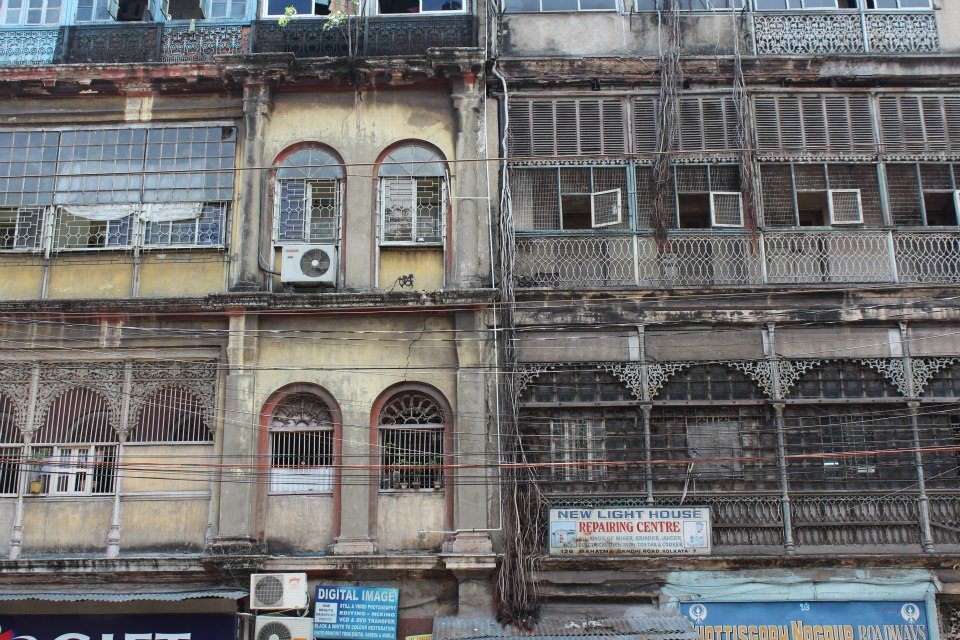
Old buildings in BBD Bagh
I jumped on the metro and headed north, into the part of the city which is known for its congestion and squalor. The streets around BBD Bagh were full of artisans, carving wood and preparing all sorts of food. As I walked along I heard the clanging on an ancient-looking tram as it rattled along the street next to me. The sun broke through the clouds again as I snapped pictures of the beautiful Nakhoda Mosque.
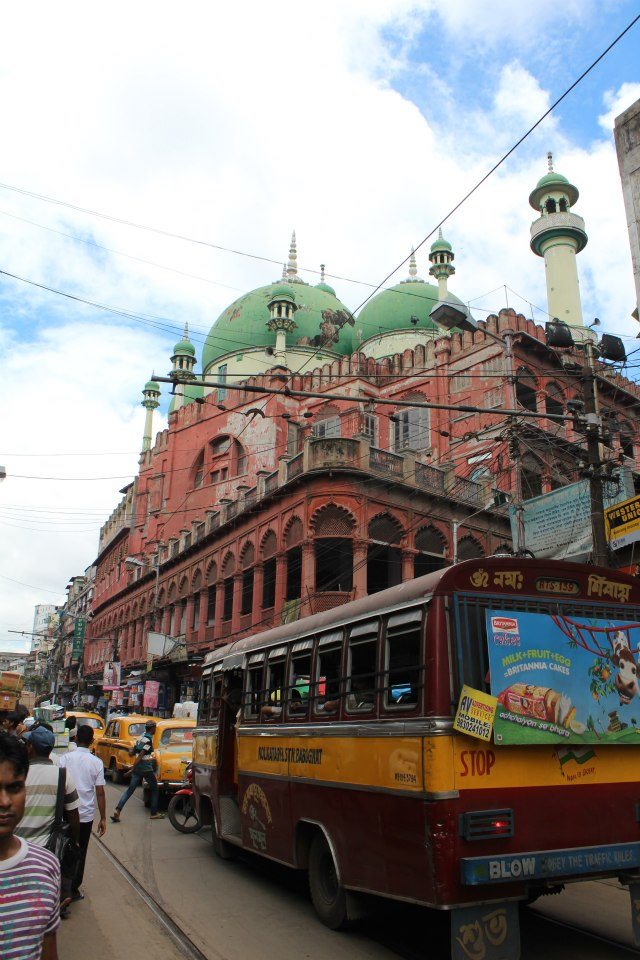
Nakhoda Mosque
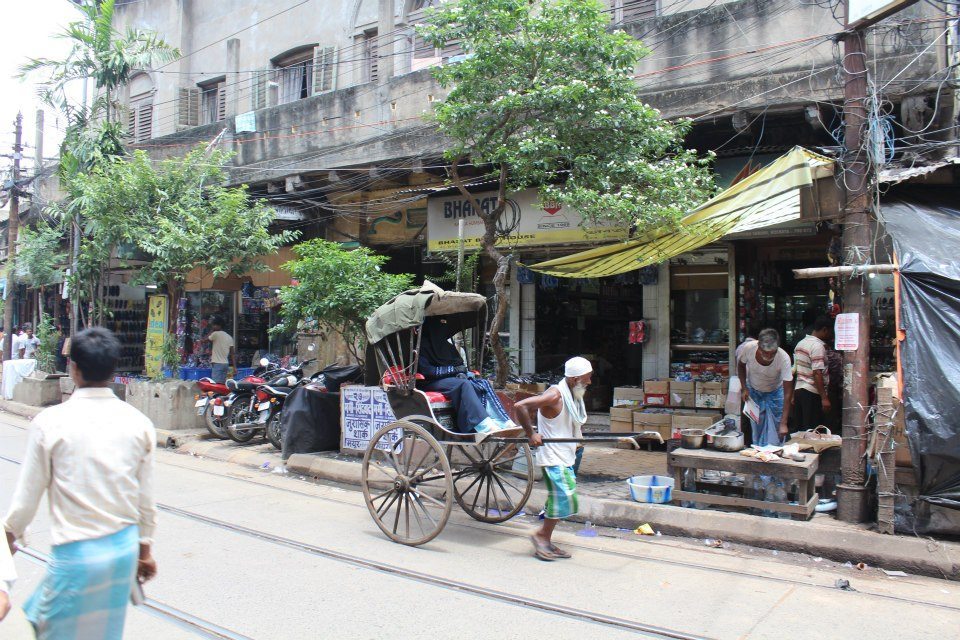
Hand-drawn rickshaw in BBD Bagh
I felt as if I was in a bazaar, traders joined the main street from small dark alleyways, carts full of vegetables pushed their way past me, all trying to get to their destinations as quickly as possible. Once again, the streets were lined by decrepit colonial-era buildings, their mouldy arches and rotting wooden shutters representing a faded era when carts outnumbered cars on the narrow twisting roads. The Writers’ Building is an example of this, as is the High Court.
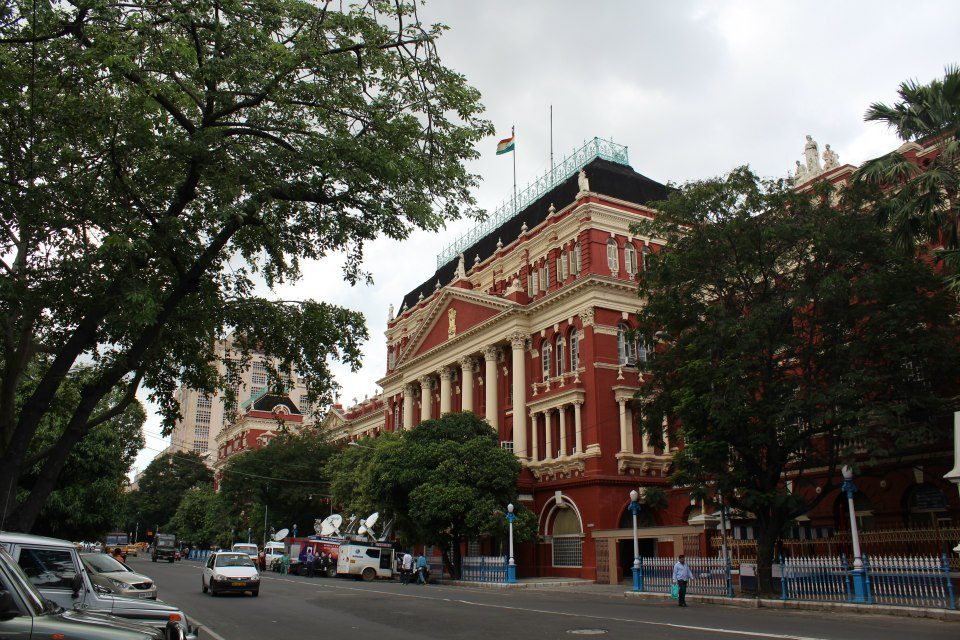
Writers’ Building
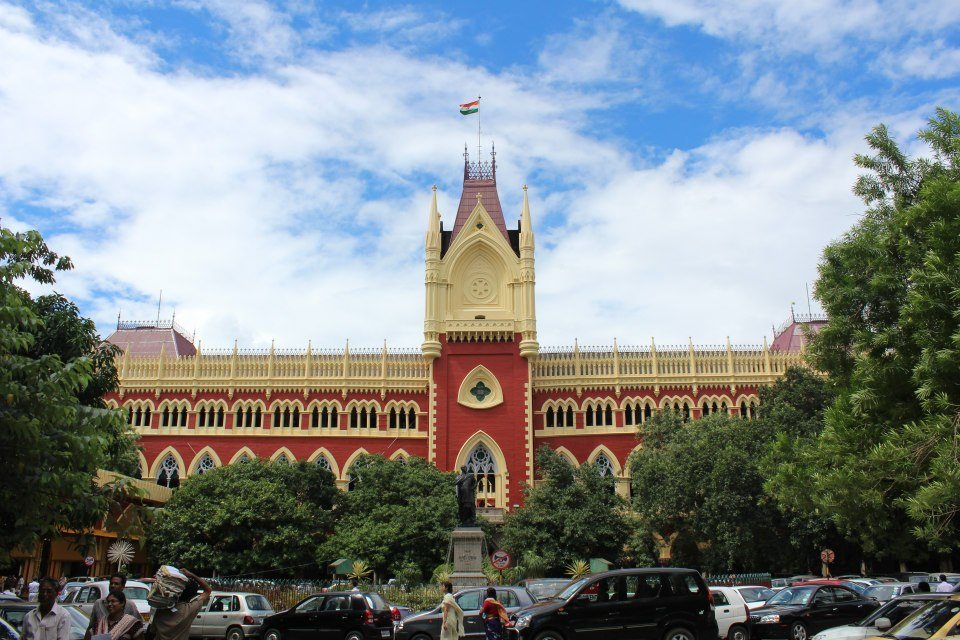
Kolkata High Court
I arrived at the High Court at lunch time, and its forecourt was full of law-makers dressed in full regale, buying food from the vendors on the street side. Meanwhile small street children washed their plates in the recesses on the street side. Here, water drawn up from the nearby Hooghly River is constantly dispensed on to the streetside. There are no taps – the water runs 24 / 7. In the mornings the poor wash themselves here, in the afternoons and evenings the water is used for cooking, plate washing, or for the very poor, drinking. The excess water fills the gutters, which then flow back into the river. By the time it returns to the river, it has in some way passed the hands, the plates, the houses, the bodies and even the stomachs of the city’s rich, middle, working, poor and utterly destitute. The water unites the city and mingles with the pure monsoonal rains and the foul sewers, and underlines the reason for the city’s existence. I can’t think of a more beautiful metaphor for life and death in India’s second biggest metropolis.
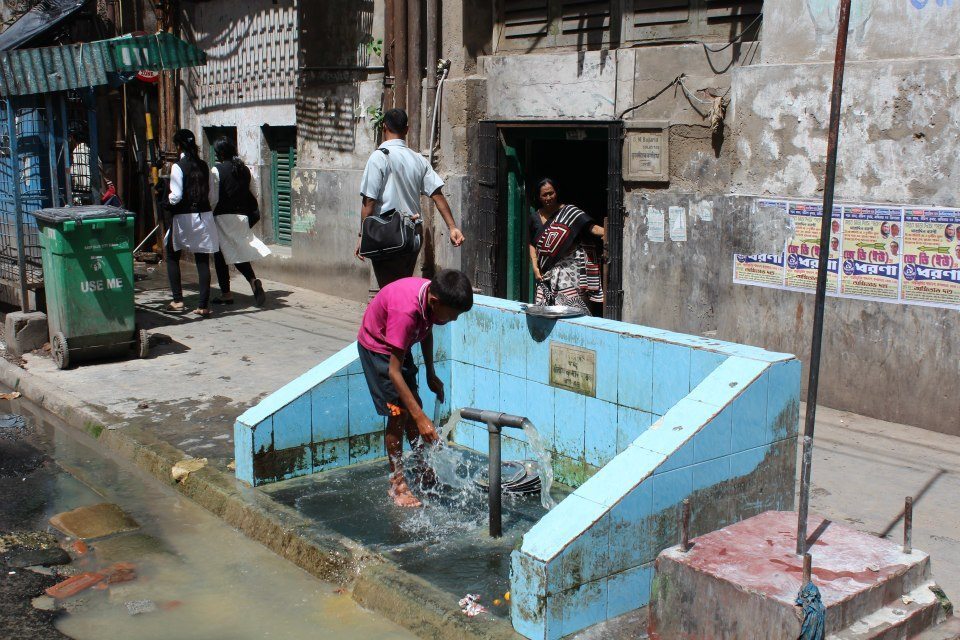
Washing dishes on the street, BBD Bagh
I had a late lunch on the Floatel, an old ship which is permanently moored on the banks of the Hooghly and has been turned into a hotel and restaurant. From here, I had a perfect view of the city, its river and the Howrah Bridge.
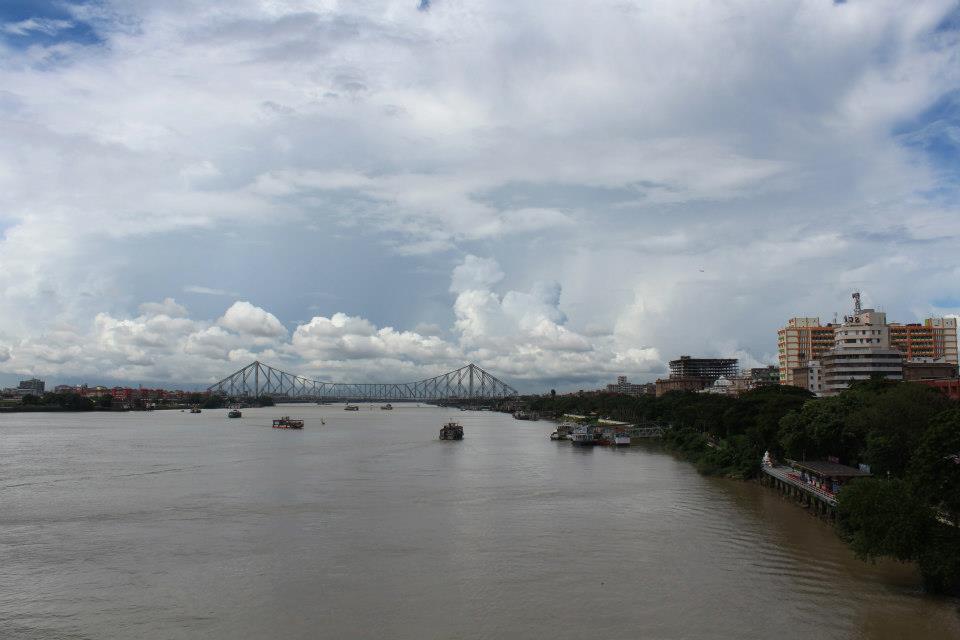
Howrah Bridge over the Hooghly River
The Howrah Bridge connects Kolkata to the satellite city of Howrah on the opposite riverbank. It is reportedly the busiest cantilever bridge in the world, taking at least 100,000 vehicles per day, and upwards of 150,000 pedestrians. As I sat there, I also had front row seats to a massive monsoonal storm which enveloped the city, the sheets of rain bringing visibility down to less than a hundred metres (ie – from the Floatel, I could no longer see the city’s buildings, just across the river bank).
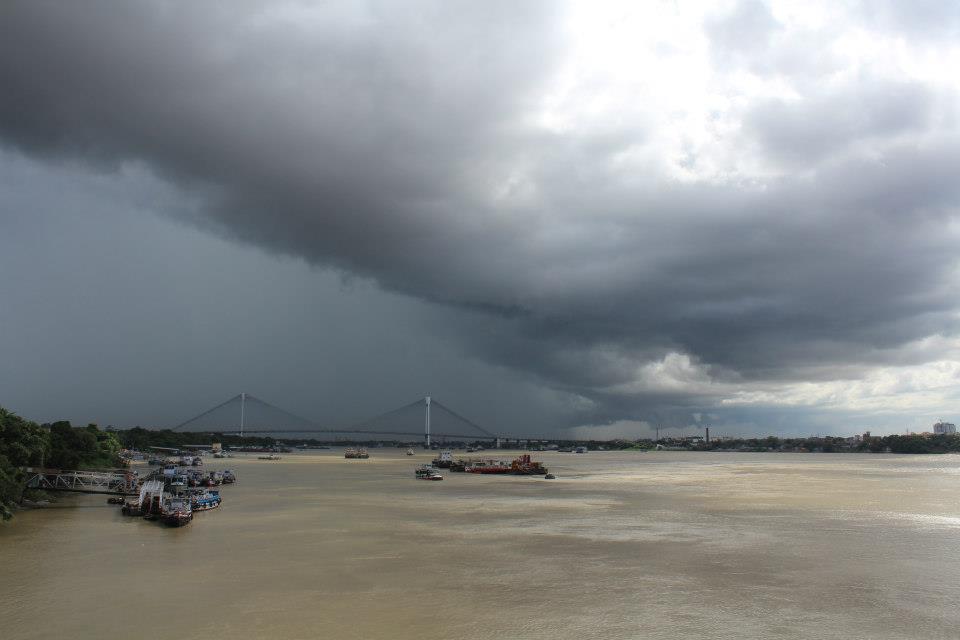
Monsoonal storm rolls in over the New Howrah Bridge
Another of Kolkata’s monsoonal storms had arrived, the fourth and easily the largest that day. Life in Bengal (both Indian Bengal and Bangladesh) is like this between May and September – in their daily lives, Bengalis bear in mind their nearest shelter; a shop, bus stop, friend’s house, that they can run to when necessary. I sat there watching the rain, beautiful in its drama, chowing down my local food.
Bengali food is a reflection of Bengal’s apparently finer, sophisticated culture; if you put an Indian in a Parisian kitchen, the result might be Bengali cuisine. The few foreigners who make it to Bengal are pleasantly surprised by the tangy, fruity preparations. Instead of the usual India obsession with chilli and pepper, Bengali food uses a lot of lemon, sultanas, coconut, tamarind, palm sugar, mustard and bay leaves. A typical dish is Mache Paturi – fish baked in a semi-sweet mustard marinade. And the desserts! Bengali desserts are widely accepted to be India’s best, When they use sugar to flavour mains you can imagine what they do at the end of the meal! Mishti Doi is thick set yogurt churned with palm sugar syrup – oh my God!

Ilish paturi, or Bengali banana-leaf steamed fish (Image: The Hindu)
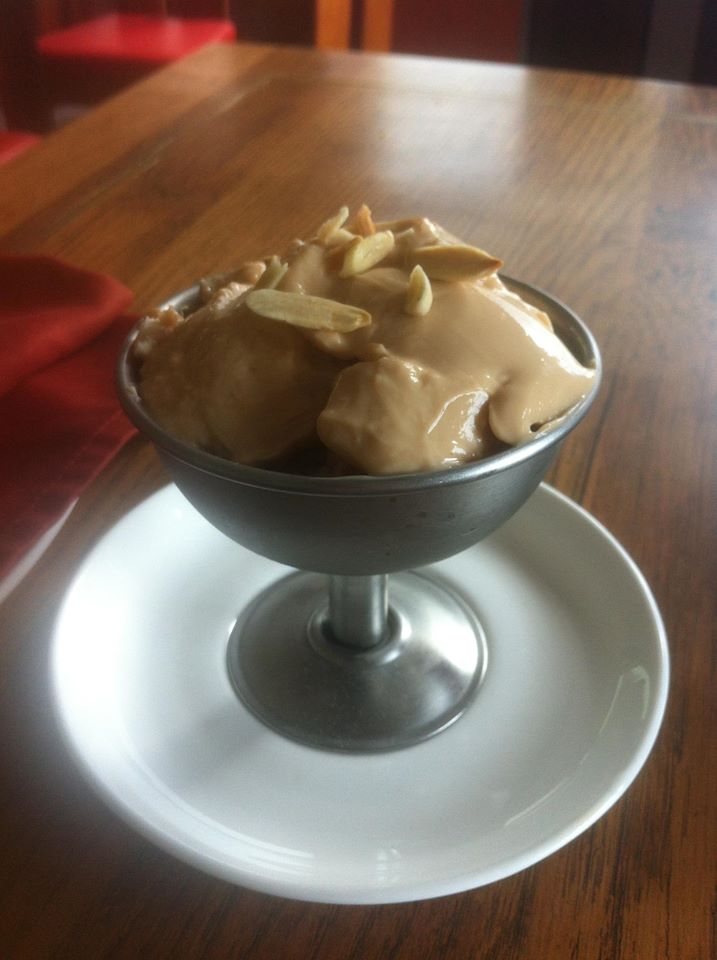
Mishti doi on the Floatel
With the rain passed, I headed back to my hotel in the late afternoon thinking about my day in Kolkata; what a beautiful city. As I passed street side stalls, the scents of incense, jasmine, vanilla and jaggery wafting from them, I decided that I would return one day, for much, much longer.
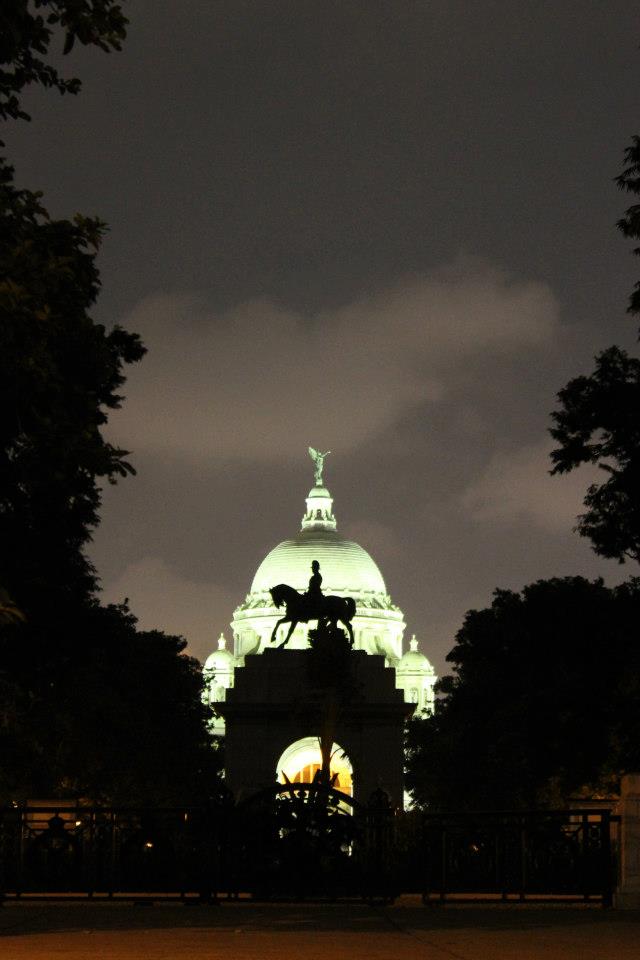
Good night Kolkata, at the Victoria Monument

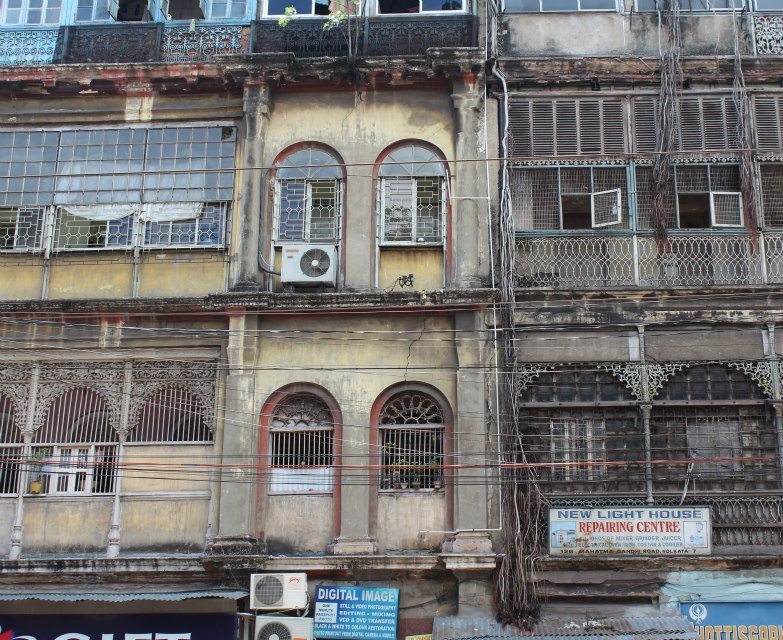



nice piece. Good to see that there are still a few man pulled rickshaws out there! (and in other ways, it’s not so good I guess).
Yep very true – quaint yet raises other concerns. Thanks for reading, Andrew 🙂
Loved your description (gross but really great too) about the water, amazing that it manages to do SO much for the city. And that rickshaw, I seriously need to get my butt back to the gym, how strong and fit does he look?! A few steps and I’d be on the floor. 🙂
Thanks Anna 🙂 Yep – it’s totally gross, but it’s “so Kolkata” – you really feel and experience this city – and I love it! <3
And yeah, I'd much rather be a rickshaw passenger than driver! :p